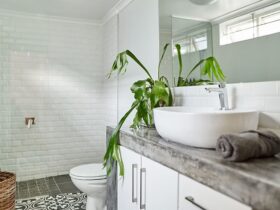Did you know that the United States is home to 1107 different species of birds? The diversity of birds is simply astounding, and you can view many of them in your backyard.
If you want to wake up to birds singing, watch a wild bird bathing in your lush yard, and support the local ecosystem, then you’ve come to the right place.
This guide will take you through everything you need to know to turn your backyard into a bird-friendly paradise. With a few simple steps, you’ll be attracting local and migratory birds the entire year round!
Add Native Plants
When you’re considering a backyard makeover with the aim of attracting wild birds, always choose native and indigenous plants. You want to plant vegetation that local birds are familiar with as a source of food and energy. Avoid exotic plants and do a bit of background research into the plants from your area.
Using native plants in your yard is good for the birds and for you. These plants are easier to maintain and care for as they are adapted to the local climate and conditions.
Think about providing native plant species that have fruits, seeds, nectar, and nuts. Birds will love these!
Plant Layered and Dense Vegetation
To create the ultimate bird-friendly sanctuary with a landscaping makeover, think about layering vegetation. What does this mean? There needs to be vegetation at every level to suit every bird.
Some wild birds are ground foragers, others nest in bushes, while some prefer feasting and resting at great heights. Choose plants that grow to different heights to create layered vegetation. Have large canopy trees, shrubs, and small trees, etc.
Besides layered vegetation, you also need to create pockets of dense vegetation. Cluster plants together to create an attractive wildlife refuge that appeals to pollinators.
Don’t Forget a Water Source
When you create your bird haven you need to provide a source of water for your returning guests and residents. Birds need a constant water source the entire year — especially if they want to nest in your garden.
How can you increase your curb appeal and appraisal value while attracting birds? A water feature!
Water features that catch rainwater or have a deep enough hole for birds to drink and bathe in are a winner.
Minimize Your Lawn, Increase Your Mess
You might think your mono-culture grass is lovely, but wild birds don’t. The suburban lawn is hardly a natural occurrence and is not useful to birds.
Minimize your lawn by planting around the edges of it. Or, consider reversing the typical landscaping pattern. Instead of small flower beds surrounded by expansive lawns, have large areas of plants with weaving lawn pathways in between.
When you do away with your manicured lawn, remember that a bird-friendly habitat is not perfect and trimmed. Long grass, leaf litter, and plant refuse are great for birds. It’s not only a fantastic place to find some insects to munch on, but it also makes for great nesting materials.
Don’t Get Rid of Your Trees
Trees are really important for birds. They perch on branches while hunting for food below, and it’s also where most birds make their nests. So, it goes without saying that you shouldn’t cut down the trees in your yard.
If a tree absolutely has to go for safety reasons, or because it is an invader, then make the most of its stump. You can leave the dying and decaying stump to provide delicious insect snacks for wild birds.
Alternatively, you can plant a native vine-ing plant or shrub around the tree. It will eventually envelop the stump.
Provide Wind Protection and Creat Refuges
Small birds get blown around in the wind and they’re most attracted to areas that are protected from massive gusts. Take into account the direction that the wind blows most of the time and consider planting hedges or dense shrubs to provide some protection.
You can also create wildlife refuges where birds can live undisturbed, safe from humans and domestic pets. Think about adding birdhouses and nesting boxes that are appropriately sized for the birds you hope to attract or that you’ve already sighted in your yard.
Check out Nature-niche.com for incredible birdhouses, and backyard bird feeding features.
Make Use of Your Rooftop
If you have a flat roof and gravel top then consider adding this to your wildlife sanctuary. You can add dense clusters of potted plants and shrubs, creating a bird garden on top of your home.
This is a great idea because it keeps the birds safe from domestic animals and is sure to attract them as they’re flying over. You can add a birdbath, vines — the works!
Avoid Pesticides
It goes without saying that the last thing you want to do is attract wild birds to your yard and then poison them. Avoid using pesticides on any of your plants. If you’re growing edible plants, use netting to protect them from insects.
This goes for the critters inside your home, too. If you use rat poison in your house, you risk fatally poisoning the owls and hawks that feed on the rodents.
Turning Your Backyard Into a Wild Bird Habitat
You can turn your backyard into a wild bird sanctuary by making a few simple changes. It’s important to plant native plant species, provide birds with water and wind protection, and opt for a ‘messy’ love manicure.
Did you enjoy this post? Our site is full of awesome content for homeowners — keep exploring for more interesting and informative articles.








